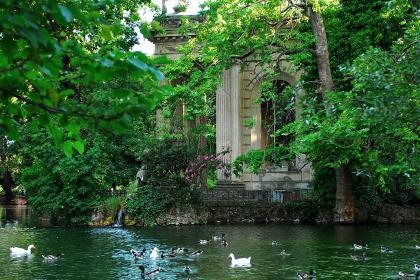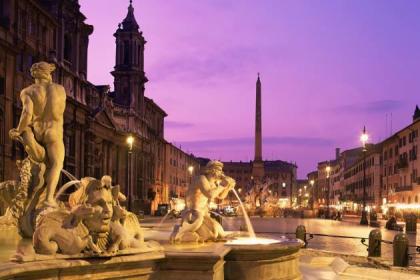






A pocos pasos de la terraza del Pincio, uno de los puntos panorámicos más evocadores de Roma, se alza el Obelisco Aureliano o Obelisco de Antinoo, llamado así en honor al joven griego amado del emperador Adriano, que se ahogó prematuramente en el Nilo en circunstancias que aún no están claras.
Adriano deificó a Antínoo, y en el propio Egipto se erigieron templos en su honor, incluyendo una ciudad llamada Antinópolis. En Roma se le dedicó un templo, y el obelisco era uno de sus ornamentos. Los jeroglíficos que lo cubren fueron tallados para conmemorar la vida y la trágica historia del joven.
Adriano, gran erudito del arte egipcio, del que había reunido notables ejemplos en su villa de Tívoli, ordenó su traslado a Roma.
En el año 300 d. C., el obelisco fue trasladado al Circo Variano, cerca de la actual Basílica de la Santa Cruz de Jerusalén, para marcar su espina, donde cayó y se partió en tres pedazos. Fue redescubierto allí en 1589 y, debido a su proximidad a las Murallas Aurelianas, recibió el nombre de Aureliano.
A partir de entonces, pasó por varios propietarios y fue transportada a diversos lugares: entre ellos, cabe mencionar el patio del Palazzo Barberini, adonde fue trasladada en 1633, pero nunca llegó a erigirse.
En la segunda mitad del siglo XVIII, fue adquirida por el Vaticano, donde el papa Clemente XIV la hecho erigir en el Cortile della Pigna.
No fue hasta agosto de 1822, por orden del papa Pio VII, como parte de la completa reorganización de la zona del Pincio y del paseo público, impulsada por Giuseppe Valadier, que se instaló en su emplazamiento definitivo en el viale del Obelisco.
Esculpido en granito rosa, el Obelisco de Antinoo mide más de 9 metros de altura; con su base y la estrella que lo corona, alcanza los 17,26 metros.
Pincio: Paseo y Terraza

 Condividi
Condividi
Villa Borghese

 Condividi
Condividi
Obelisco Agonale

 Condividi
Condividi
Informaciones
 Condividi
Condividi
Location
Para conocer todos los servicios de accesibilidad, visite la sección Roma accesible.

















































